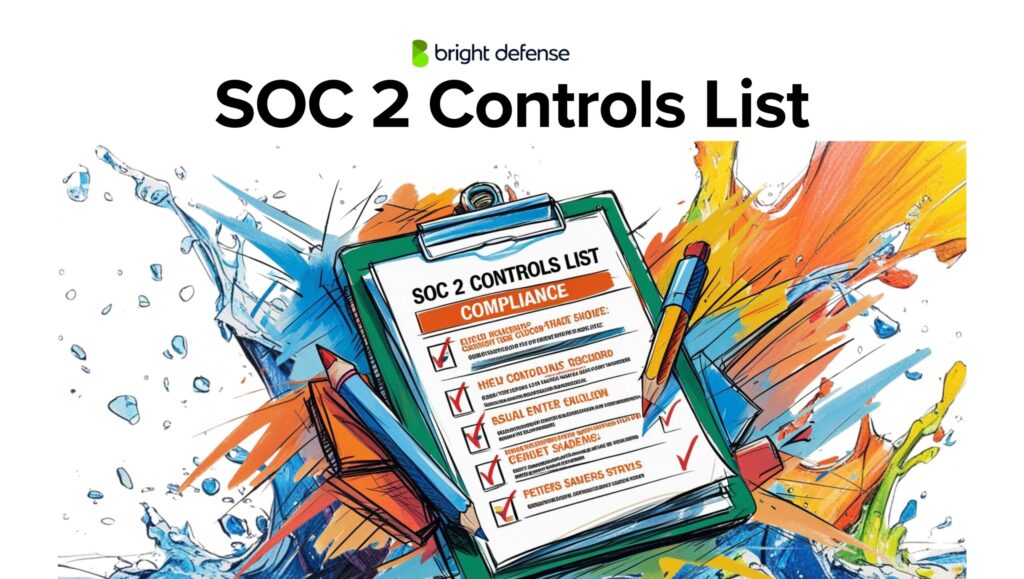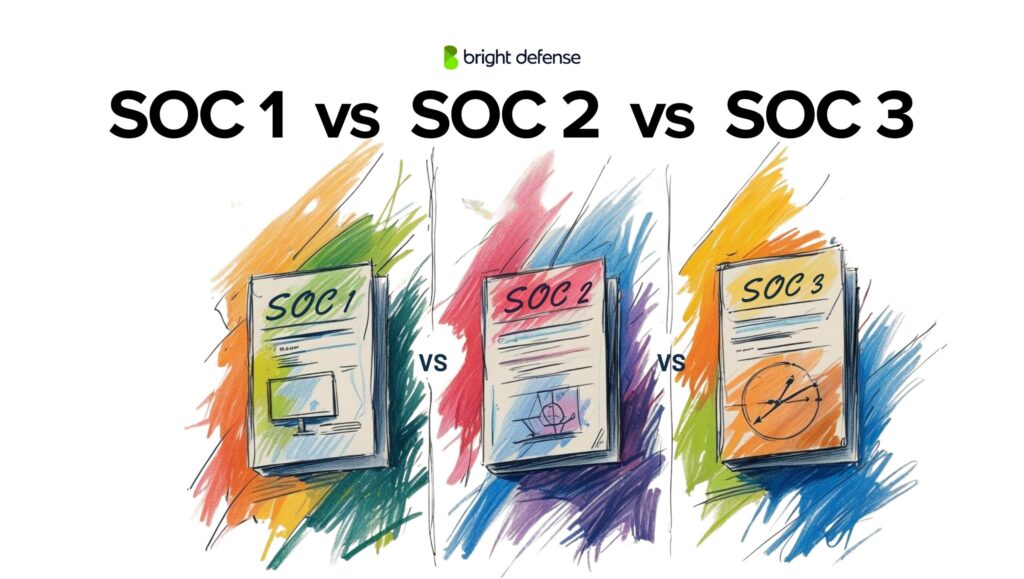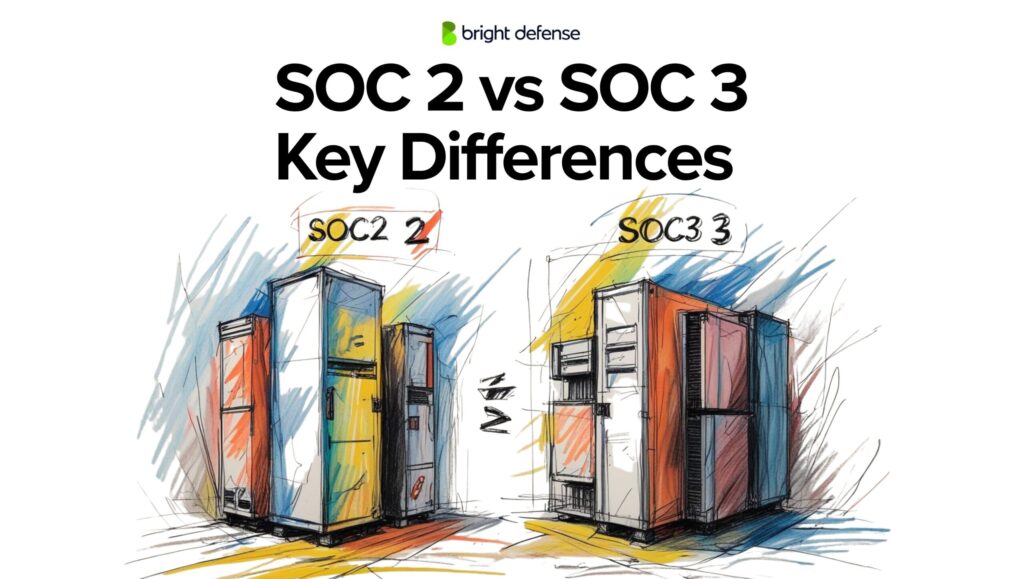
John Minnix - Compliance Strategist
June 28, 2025
CMMC Assessment Guide: Path to Cybersecurity Compliance
Cyberattacks are becoming increasingly sophisticated and prevalent. Safeguarding sensitive data and securing government contracts has never been more critical. The Department of Defense (DoD) introduced the Cybersecurity Maturity Model Certification (CMMC) to address these concerns. This framework has quickly become a crucial standard for businesses looking to enhance their cybersecurity posture and maintain compliance.
In this comprehensive CMMC Assessment Guide, we will explore the ins and outs of CMMC and provide valuable insights for businesses interested in achieving and maintaining CMMC compliance.
At Bright Defense, we specialize in continuous cybersecurity compliance services, making us your trusted partner on this journey. If you are interested in CMMC compliance services, contact us today!
What is CMMC?
The Cybersecurity Maturity Model Certification, or CMMC, is a unified standard designed to assess and enhance the cybersecurity posture of organizations that engage with the U.S. Department of Defense (DoD). This framework aims to standardize cybersecurity practices across the defense industrial base (DIB) and ensure that contractors and subcontractors meet the necessary cybersecurity requirements.
The original CMMC framework was announce in 2019. It featured five levels of maturity (1-5) with increasing requirements as the levels progressed. In November 2021, the Department of Defense released CMMC 2.0. This streamlined the compliance model into three tiers (Levels 1, 2 and 3).
Why is CMMC Necessary?
The need for CMMC arises from the ever-increasing cyber threats organizations face, particularly those dealing with sensitive government data and contracts. In an era of data breaches and cyberattacks, CMMC provides a robust defense mechanism to safeguard sensitive information and ensure the integrity of the defense supply chain.
Overview of CMMC Levels
CMMC 2.0 comprises three maturity levels. CMMC Level 1 is the most basic level. It comprises 17 practices from NIST 800-171. Companies that meet Level 1 compliance are required to submit an annual self assessment. Bright Defense can assist with the 17 controls and the assessment process.
CMMC 2.0. Level 2 is aligned with NIST SP800-171. It comprises 110 controls. A third-party assessments are required every three years for critical national security data. Annual self assessments will also be required.
CMMC 2.0 Level 3 is the most stringent. There are over 110 requirements based on NIST SP 800-171 and 800-172. Government-led assessments will be required every three years for Level 3 contractors.
CMMC 2.0 is currently in the rule-making process. Companies that want to do business with the defense industrial base must meet CMMC 2.0 once the rules go into effect. This is estimated to take place in 2024.

CMMC Assessment Process
Let’s look at the CMMC assessment process in detail:
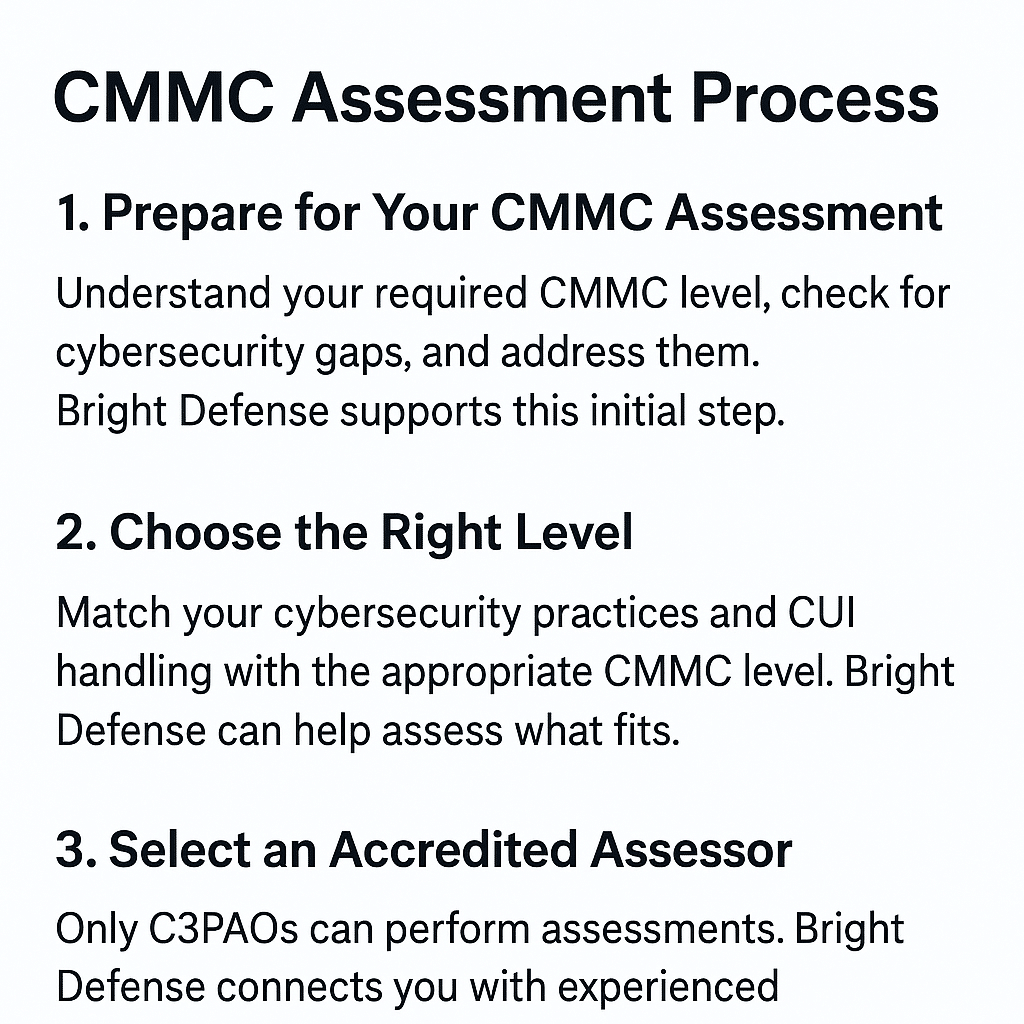
1. Preparing for a CMMC Assessment
Preparation is key to a successful CMMC assessment. It involves understanding the requirements of your chosen CMMC level, identifying potential gaps in your cybersecurity practices, and putting corrective measures in place. Bright Defense specializes in assisting organizations with this preparatory phase.
2. Choosing the Right Assessment Level
Selecting the appropriate CMMC level is crucial. Businesses should assess their current cybersecurity practices, the nature of their work with the DoD, and the level of CUI they handle to determine the most suitable level. Bright Defense can provide guidance in this decision-making process.
3. Selecting an Accredited Assessor
Certified Third-Party Assessor Organizations (C3PAOs) must conduct CMMC assessments. Choosing the right assessor is essential to ensure a fair and thorough evaluation. Bright Defense can help you connect with reputable assessors experienced in CMMC assessments.
CMMC Compliance Steps
CMMC compliance requires a step-by-step approach to meet federal cybersecurity standards. The process below outlines the key phases to prepare for certification:
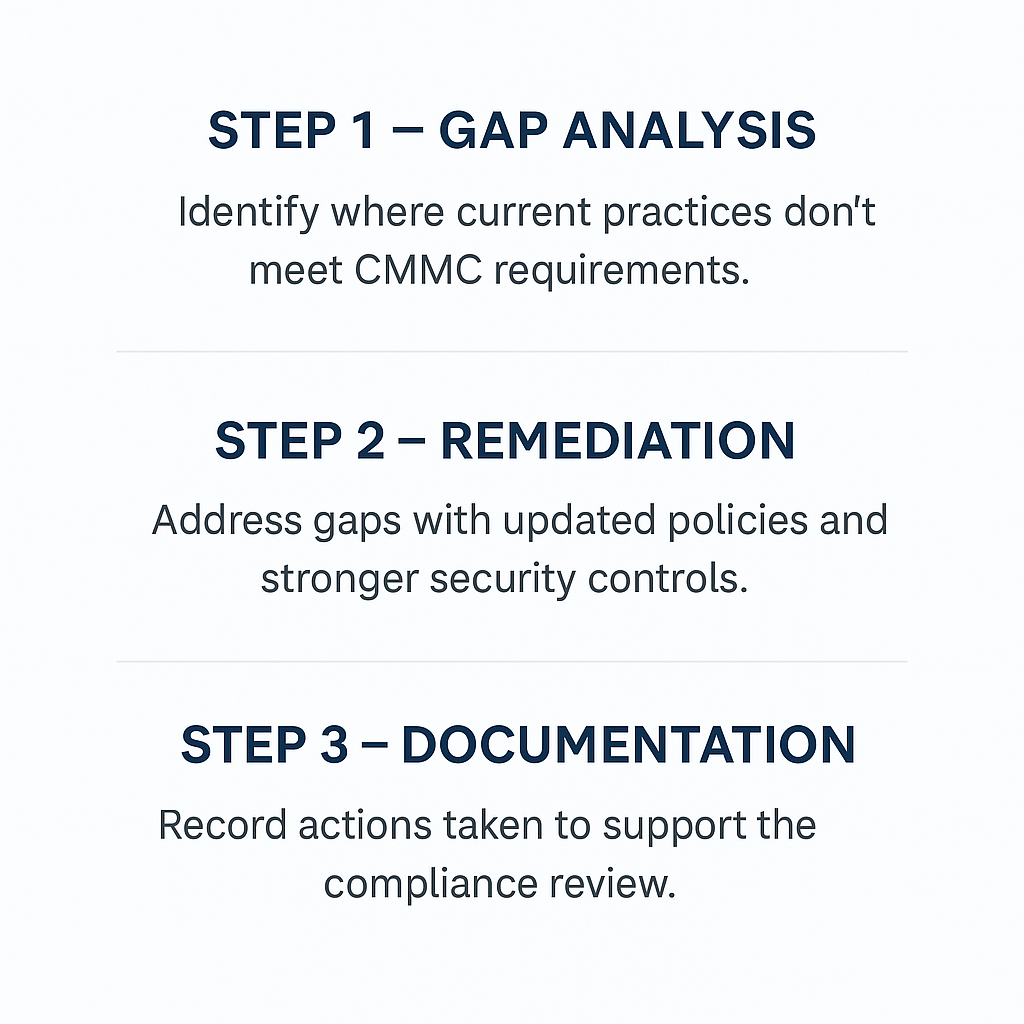
Step 1 – Gap Analysis
Conducting a gap analysis is the first step towards CMMC compliance. This process involves identifying areas where your organization’s current cybersecurity practices fall short of the requirements outlined in the chosen CMMC level. Bright Defense’s expertise in this phase can significantly streamline the process.
Step 2 – Remediation
Once gaps are identified, organizations must take corrective action to address vulnerabilities and shortcomings. Remediation involves implementing cybersecurity best practices, updating policies and procedures, and enhancing security controls to meet CMMC requirements.
Step 3 – Documentation
Documentation is a crucial aspect of CMMC compliance. Organizations must maintain accurate records of their cybersecurity practices and actions taken during the gap analysis and remediation phases. These records serve as evidence during the assessment process.

CMMC Assessment Prcess
Let’s check out the CMMC assessment process:
1. The Assessment Process
During a CMMC assessment, certified assessors evaluate an organization’s cybersecurity practices against the selected CMMC level. This involves reviewing documentation, conducting interviews, and assessing the effectiveness of security controls. The assessment process ensures that organizations meet the required standards.
2. Handling Assessment Findings
Assessment findings can result in various outcomes, ranging from full compliance to non-compliance with the chosen CMMC level. It is essential to address any non-compliance issues promptly, implementing corrective measures and documenting the changes made.
Maintaining CMMC Compliance
Here’s how you can maintain CMMC compliance:
1. Continuous Monitoring
CMMC compliance is not a one-time achievement; it requires continuous monitoring and improvement. Organizations should establish processes for ongoing cybersecurity maintenance and regularly update their practices to stay aligned with evolving threats and CMMC requirements. Bright Defense offers continuous cybersecurity compliance services to support this critical aspect of compliance.
2. Dealing with Changes in CMMC
The cybersecurity landscape is dynamic, and CMMC requirements may evolve over time. Organizations must stay informed about changes and updates to the CMMC framework to ensure continued compliance. This involves ongoing training, assessments, and adjustments to cybersecurity practices.

CMMC vs. NIST SP 800-171: Understanding the Key Differences
Before the introduction of the Cybersecurity Maturity Model Certification (CMMC), the National Institute of Standards and Technology (NIST) Special Publication 800-171 was the primary framework for safeguarding Controlled Unclassified Information (CUI).
While CMMC builds upon the foundation of NIST SP 800-171, it introduces several critical differences and improvements that organizations must be aware of when transitioning to this new standard.
CMMC vs. NIST SP 800-171 Comparison Table
| Aspect | NIST SP 800-171 | CMMC (Cybersecurity Maturity Model Certification) |
|---|---|---|
| Certification vs. Self-Assessment | Self-assessment model. Organizations create a System Security Plan (SSP) and a Plan of Action and Milestones (POA&M) to track compliance. | Requires third-party certification. Certified Third-Party Assessor Organizations (C3PAOs) evaluate and certify organizations at one of three levels. |
| Maturity Levels | No maturity levels. All security requirements are applied uniformly. | Three defined maturity levels, allowing organizations to align cybersecurity efforts with data sensitivity and risk. |
| Progressive Requirements | Static controls. Compliance is binary – either a control is implemented or not. | Requirements increase with each maturity level. Higher levels demand greater cybersecurity capabilities. |
| Assessment Scope | Focused on protecting Controlled Unclassified Information (CUI) only. | Broader focus including APT defense and securing the defense supply chain. Reflects wider DoD cybersecurity goals. |
| Ongoing Monitoring | Encouraged, but not clearly defined. No strict requirements for frequency or scope. | Emphasizes continuous monitoring and responsiveness to emerging threats. Ongoing security practices are expected. |
Certification vs. Self-Assessment
- NIST SP 800-171: Under NIST SP 800-171, organizations were typically responsible for self-assessing their compliance with the framework. They could create a System Security Plan (SSP) and a Plan of Action and Milestones (POA&M) to document their progress and address identified deficiencies.
- CMMC: CMMC introduces a certification process that involves third-party assessments. Organizations must undergo assessments conducted by Certified Third-Party Assessor Organizations (C3PAOs) to achieve certification at one of the three CMMC maturity levels. This shift from self-assessment to third-party certification adds a layer of objectivity and rigor to the evaluation process.
Maturity Levels
- NIST SP 800-171: NIST SP 800-171 provides a set of security requirements but does not prescribe different maturity levels. Organizations were expected to implement all specified controls to safeguard CUI.
- CMMC: CMMC introduces three maturity levels, each with its own security practices and processes. Organizations can select the CMMC level that aligns with their specific needs and the sensitivity of the data they handle. This tiered approach allows for a more tailored approach to cybersecurity.
Progressive Requirements
- NIST SP 800-171: NIST SP 800-171 provides a static set of security controls that organizations must implement. Compliance was largely binary – either a control was in place, or it was not.
- CMMC: CMMC’s maturity levels are progressive, with each level building upon the requirements of the previous one. This approach encourages organizations to improve their cybersecurity posture and adapt to evolving threats continuously. Achieving a higher CMMC level reflects greater cybersecurity maturity and capability.
Assessment Scope
- NIST SP 800-171: Organizations could focus solely on the protection of CUI when implementing NIST SP 800-171 controls.
- CMMC: CMMC considers a broader range of security practices, including protection against advanced persistent threats (APTs) and ensuring the overall security of the defense supply chain. This expanded scope addresses the evolving cyber landscape and aligns with the DoD’s commitment to enhancing cybersecurity across its contractor base.
Ongoing Monitoring
- NIST SP 800-171: While NIST SP 800-171 encouraged organizations to continuously monitor their security controls, it did not specify the frequency or extent of monitoring activities.
- CMMC: CMMC emphasizes the importance of continuous monitoring and adaptation. Organizations must maintain ongoing security practices and stay vigilant against emerging threats. This focus on continuous improvement is integral to CMMC compliance.
In summary, while NIST SP 800-171 laid the foundation for cybersecurity practices in the defense industry, CMMC takes a more comprehensive and progressive approach. Introducing third-party certification, maturity levels, and an expanded assessment scope sets CMMC apart as a more robust framework for safeguarding sensitive information and enhancing cybersecurity maturity within the defense industrial base. Organizations transitioning to CMMC should carefully evaluate these differences to ensure a successful and compliant migration.

Final Thoughts
We hope you have enjoyed our CMMC Assessment Guide. Achieving and maintaining CMMC compliance is critical for businesses engaged with the U.S. Department of Defense. By understanding the CMMC framework, properly preparing for assessments, and partnering with experienced organizations like Bright Defense, businesses can enhance their cybersecurity posture, protect sensitive data, and secure valuable government contracts. Continuous monitoring and adaptation are key to long-term compliance success in a rapidly changing cybersecurity landscape.
Bright Defense Delivers CMMC Compliance Solutions!
If your organization is embarking on the journey toward CMMC compliance or requires assistance with any aspect of cybersecurity, Bright Defense is here to help. Our CISSP and CISA-certified experts will deliver a security program that meets CMMC 2.0. We also provide CMMC assessments to help you understand your position on your cybersecurity journey and the level your organization may need to achieve.
In addition, we offer other solutions to improve your security posture and help you achieve CMMC 2.0 compliance. These include security awareness training, endpoint protection, mobile device management, multi-factor authentication, and vCISO services.
Achieving CMMC compliance demonstrates a commitment to cybersecurity excellence and allows you do win DoD contracts. It also protects our national security. Bright Defense is here to guide you through the process. Contact us today to get started!
Frequently Asked Questions (FAQs)
What is the difference between a CMMC self-assessment and a third-party assessment?
A CMMC self-assessment is when an organization evaluates its own compliance with the Cybersecurity Maturity Model Certification. In contrast, a third-party assessment involves an independent Certified Third-Party Assessor Organization (C3PAO) conducting an evaluation to determine compliance. Third-party assessments are required for CMMC certification.
What is CMMC 2.0, and how does it impact CMMC compliance requirements?
CMMC 2.0 represents updates and improvements to the CMMC program. It refines the certification process, introduces new cybersecurity practices, and aligns more closely with national security requirements. Organizations need to stay informed about CMMC 2.0 developments to ensure compliance with the latest standards.
Can organizations still perform self-assessments under CMMC 2.0?
Under CMMC 2.0, self-assessments remain relevant for organizations to gauge their own security posture. However, achieving CMMC certification requires undergoing third-party assessments conducted by C3PAOs to ensure an objective evaluation of compliance.
How does CMMC certification enhance national security?
CMMC certification is essential for organizations involved in national security contracts, as it helps protect sensitive information systems and ensures the integrity of the defense supply chain. By adhering to CMMC compliance requirements, organizations contribute to overall national security efforts.
What is the self-assessment process in CMMC?
The CMMC self-assessment process involves organizations evaluating their own cybersecurity practices to identify gaps and vulnerabilities. It is an essential step in preparation for third-party assessments. Organizations should use the self-assessment process to address deficiencies and enhance their security posture.
What is included in the assessment report after a CMMC assessment?
The assessment report following a CMMC assessment provides a detailed overview of the evaluation, including findings, identified gaps, and recommendations. It serves as documentation of an organization’s compliance status and helps guide remediation efforts.
Can an organization solely rely on CMMC self-assessments for compliance?
While self-assessments are valuable for internal evaluation, achieving full CMMC certification necessitates undergoing third-party assessments. Organizations must demonstrate compliance with the chosen CMMC level through an independent assessment to be certified as CMMC compliant.
How can organizations improve their security posture with CMMC?
Organizations can enhance their security posture by implementing the security practices and controls outlined in the CMMC framework. This includes continuous monitoring, gap remediation, documentation, and regular assessments to adapt to evolving cyber threats and maintain compliance.
What is the role of information systems in CMMC compliance?
Information systems play a critical role in CMMC compliance, as they are the focal point for implementing security controls. Organizations must ensure that their information systems align with CMMC requirements to protect sensitive data and achieve certification.
Where can I learn more about CMMC and its compliance requirements?
To delve deeper into CMMC and its compliance requirements, consider consulting official CMMC resources, seeking guidance from certified C3PAOs, and staying updated with the latest developments in the CMMC program to ensure your organization’s continued compliance and cybersecurity resilience.
Get In Touch

